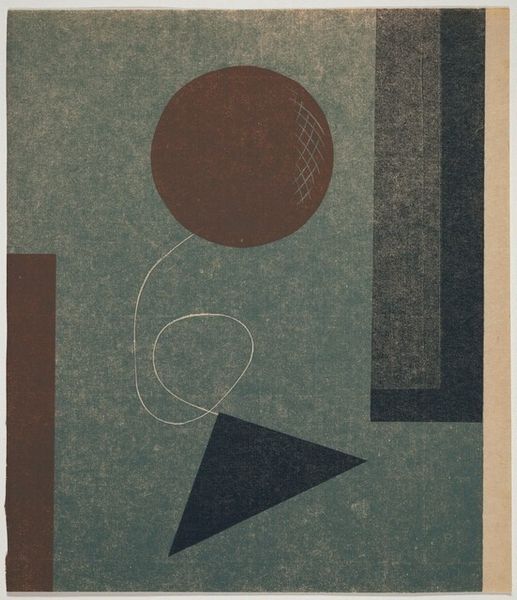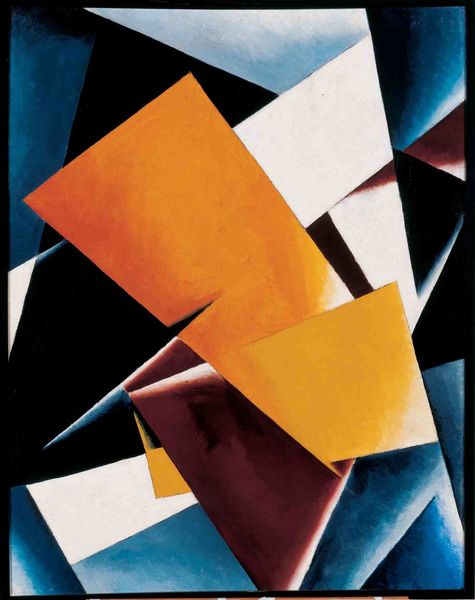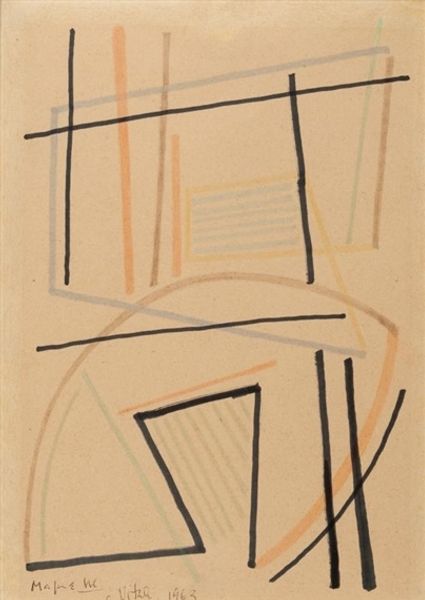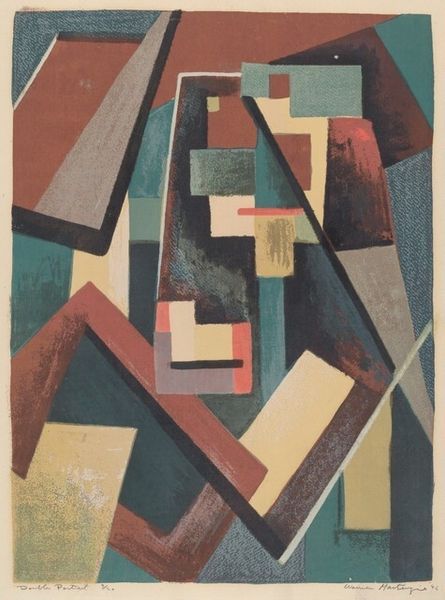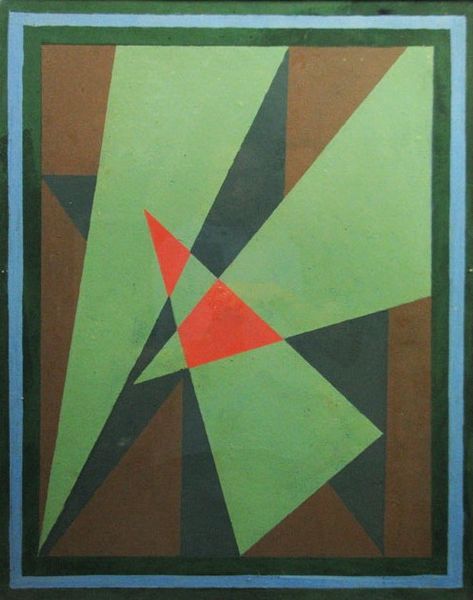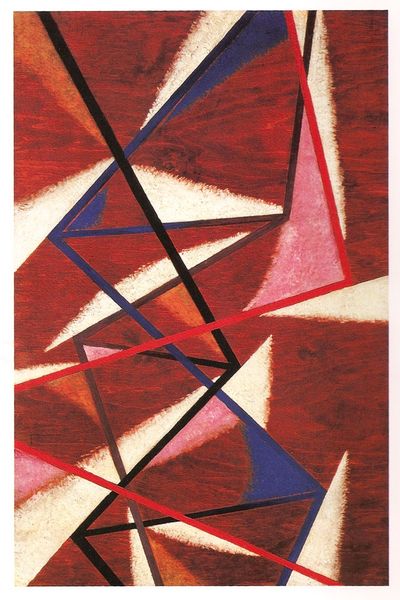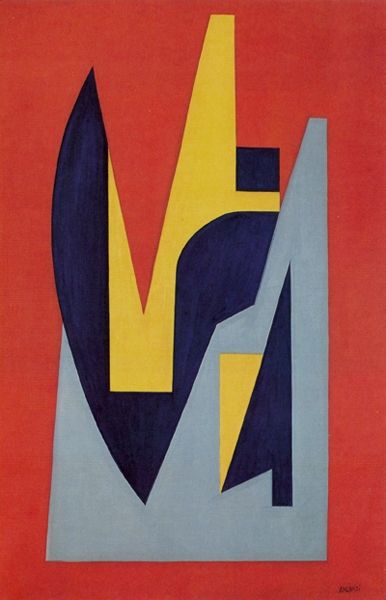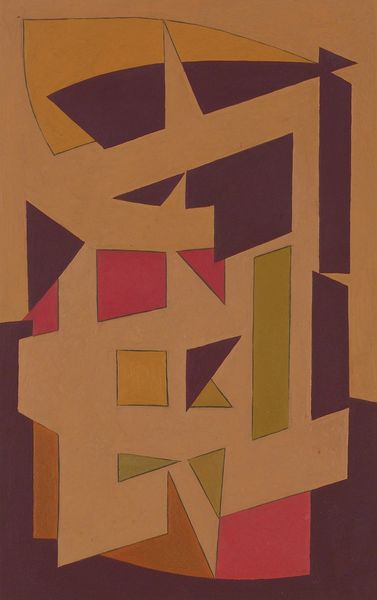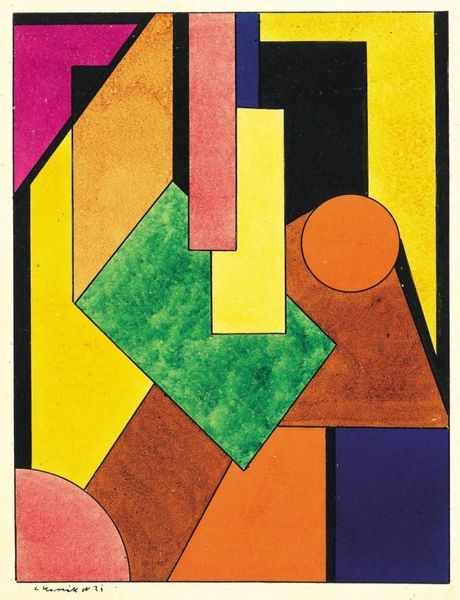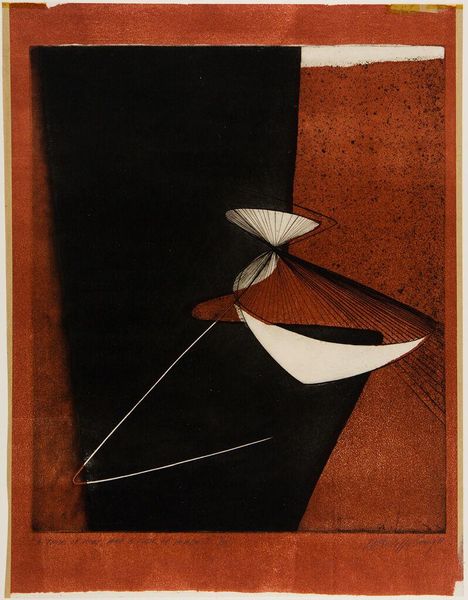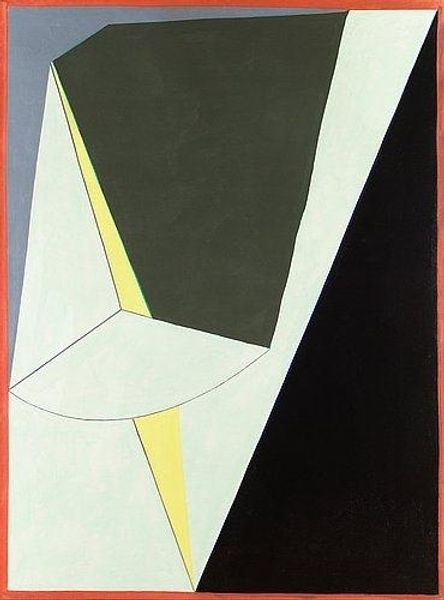
graphic-art, acrylic-paint
#
stencil art
#
graphic-art
#
stencil
#
op art
#
constructivism
#
acrylic-paint
#
linocut print
#
geometric
#
abstraction
#
line
#
russian-avant-garde
Copyright: Alexander Rodchenko,Fair Use
Editor: Alexander Rodchenko’s "Construction," with its acrylic paint on what looks like canvas or board, it’s hard to ignore the energy and optimism in such a spare composition. It reminds me a bit of early computer graphics... what strikes you about this piece? Curator: Well, seeing this, I'm immediately drawn back to the socio-political context in which Rodchenko was working. Early Soviet Union! We need to consider the Constructivist movement as a whole: its rejection of bourgeois art in favor of art with a social purpose, a utility. Editor: Utility, as in, this piece has a function beyond just being looked at? Curator: Precisely. The "Construction" series, and works like it, served as visual propaganda for the communist cause. The abstract geometric forms weren't simply decorative, they symbolized progress, industrialization, and the new social order that the Bolsheviks were trying to establish. They communicated to the masses using geometric and sparse elements and forms of modern aesthetics. Look how line suggests movement and the grid implies order... Do you think these elements communicate the ideals effectively? Editor: I see what you mean. It's less about individual expression and more about a collective vision, a message about building a new future. The lack of romanticism seems very deliberate, very of-the-moment. Curator: Exactly! Consider how museums today often struggle with exhibiting art from politically charged eras. Are we celebrating artistic merit or inadvertently endorsing the ideology behind the work? "Construction," especially, asks these challenging questions about the relationship between art and power. Editor: This definitely gives me a deeper appreciation for what's going on in the painting – seeing how it ties into a particular time and ideology. I hadn’t considered the political statement! Curator: And hopefully a broader view of the complicated role of art, and museums, within the theater of history.
Comments
No comments
Be the first to comment and join the conversation on the ultimate creative platform.

